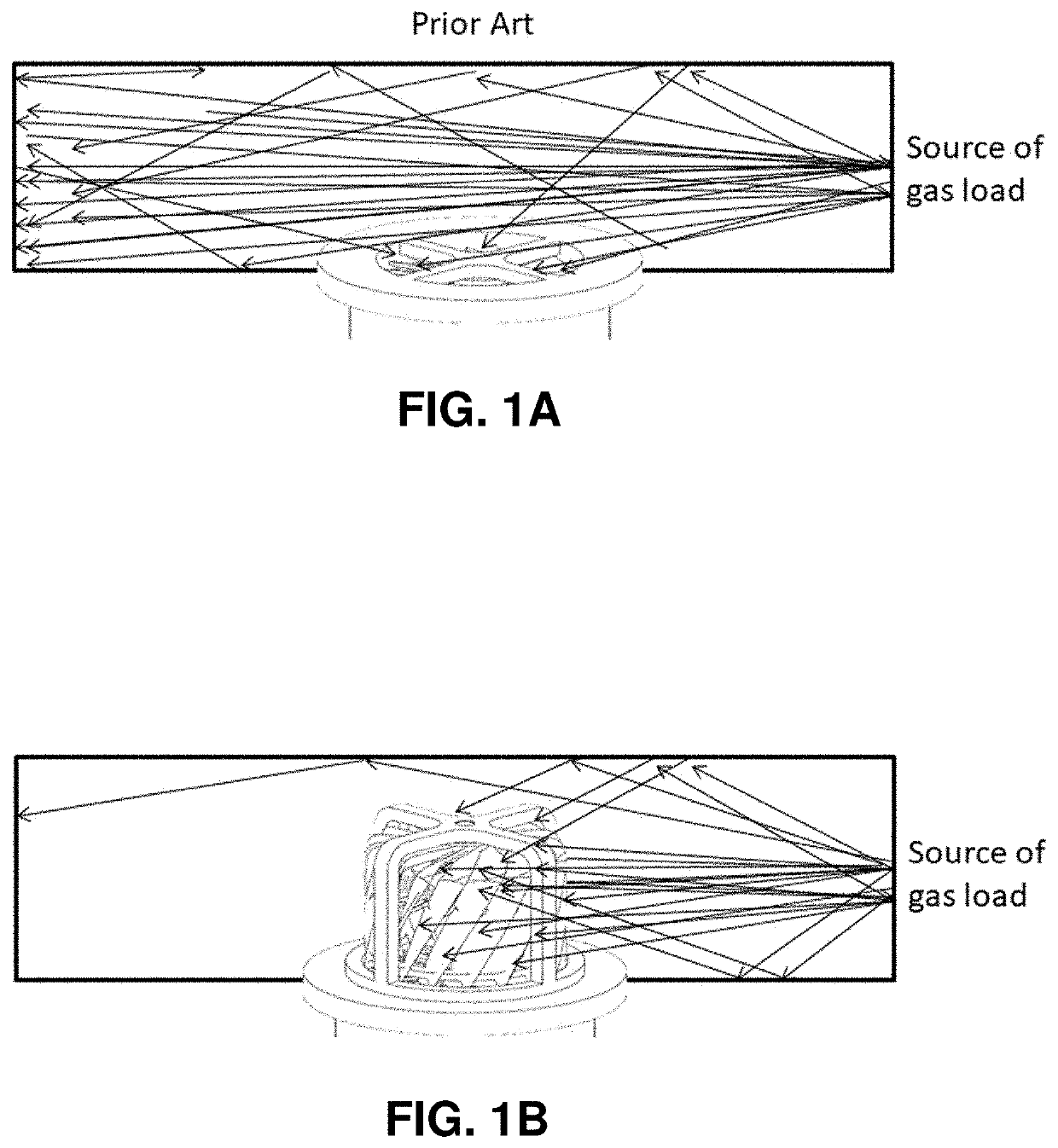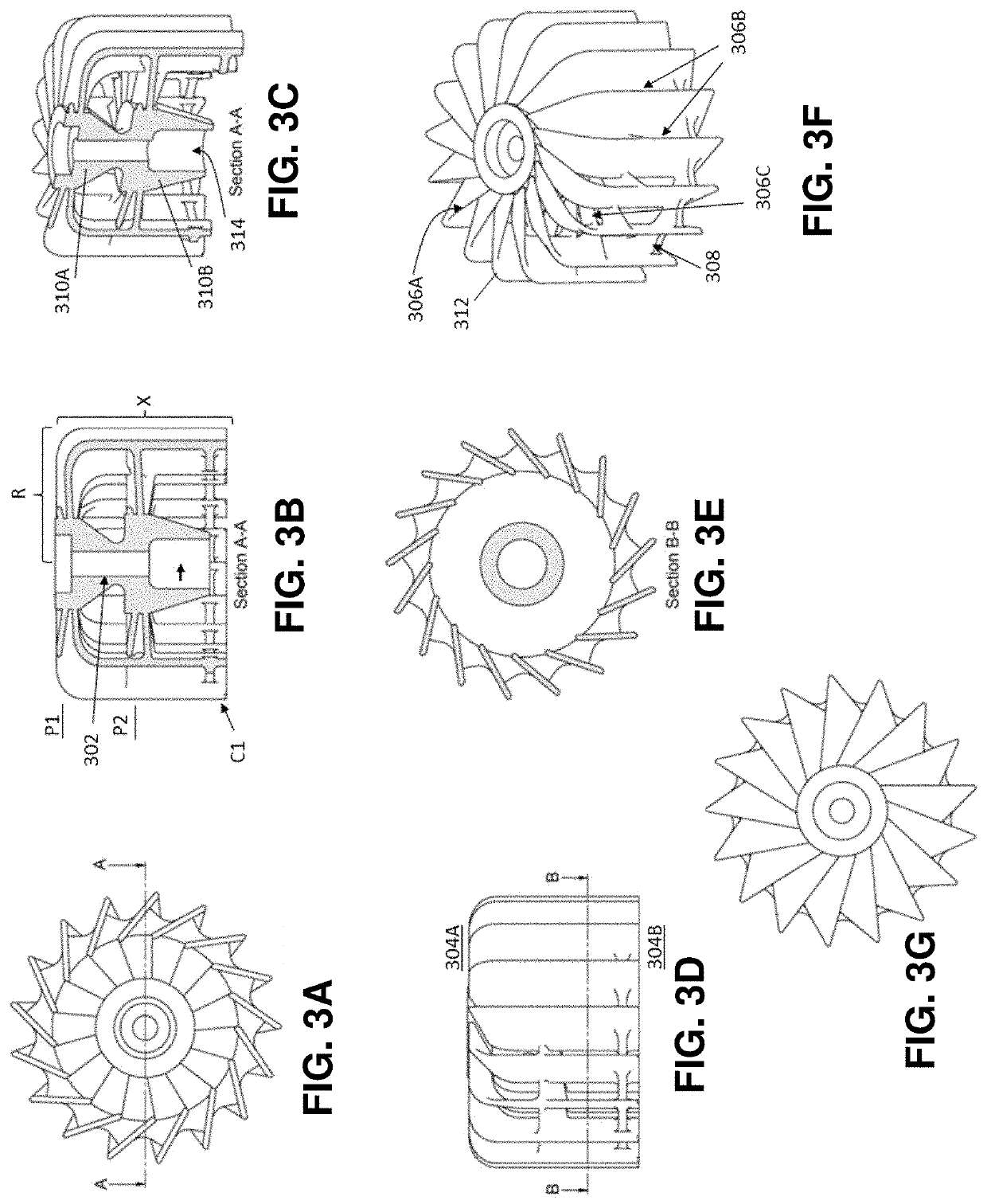Turbo molecular pump for mass spectrometer
a molecular pump and mass spectrometer technology, applied in the direction of turbines, liquid fuel engines, particle separator tubes details, etc., can solve the problems of increasing the overall system size, the material strength of the blades of the turbo molecular pump presently commercially available is already optimized, and the overall system size cannot be substantially improved, so as to achieve the effect of reducing the overall form factor, reducing the size of the overall system, and optimizing the pumping speed
- Summary
- Abstract
- Description
- Claims
- Application Information
AI Technical Summary
Benefits of technology
Problems solved by technology
Method used
Image
Examples
Embodiment Construction
[0071]While the invention has been shown and described with reference to a number of different embodiments thereof, it will be recognized by those skilled in the art that various changes in form and detail may be made herein without departing from the scope of the invention as defined by the appended claims.
[0072]The basic idea of the invention is to increase pumping speed by increasing the rotor blade cross section exposed to the chamber to be evacuated. This increases the probability of molecules to hit the rotor blades at high to ultra-high vacuum. This objective can be achieved by providing a rotor blade assembly of cage-like configuration, preferably fully exposed to the vacuum chamber, see concept illustrated schematically in FIG. 1B. The cage-like rotor blade assembly encompasses paraxially arranged rotor blade portions along the circumference of the notional “cage”. In addition, it may encompass one or more sets of radial rotor blade portions for holding the paraxial rotor b...
PUM
| Property | Measurement | Unit |
|---|---|---|
| pressures | aaaaa | aaaaa |
| pressures | aaaaa | aaaaa |
| atmospheric pressure | aaaaa | aaaaa |
Abstract
Description
Claims
Application Information
 Login to View More
Login to View More - R&D
- Intellectual Property
- Life Sciences
- Materials
- Tech Scout
- Unparalleled Data Quality
- Higher Quality Content
- 60% Fewer Hallucinations
Browse by: Latest US Patents, China's latest patents, Technical Efficacy Thesaurus, Application Domain, Technology Topic, Popular Technical Reports.
© 2025 PatSnap. All rights reserved.Legal|Privacy policy|Modern Slavery Act Transparency Statement|Sitemap|About US| Contact US: help@patsnap.com



